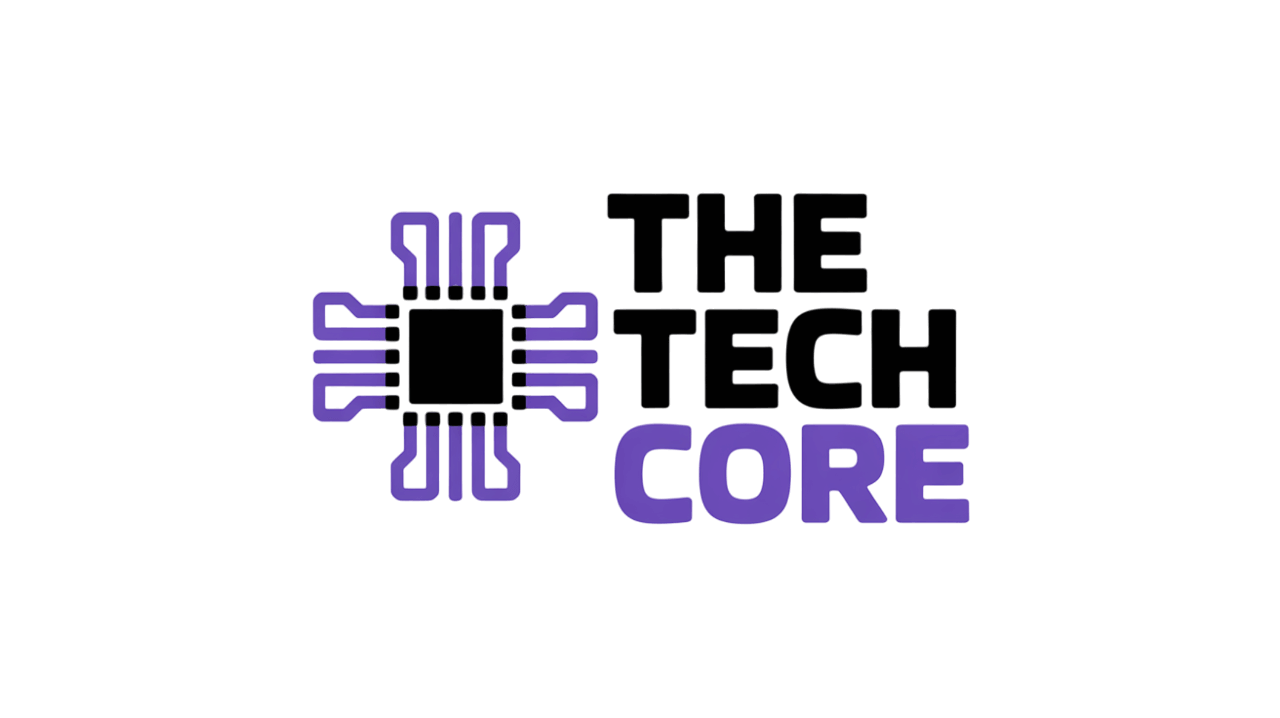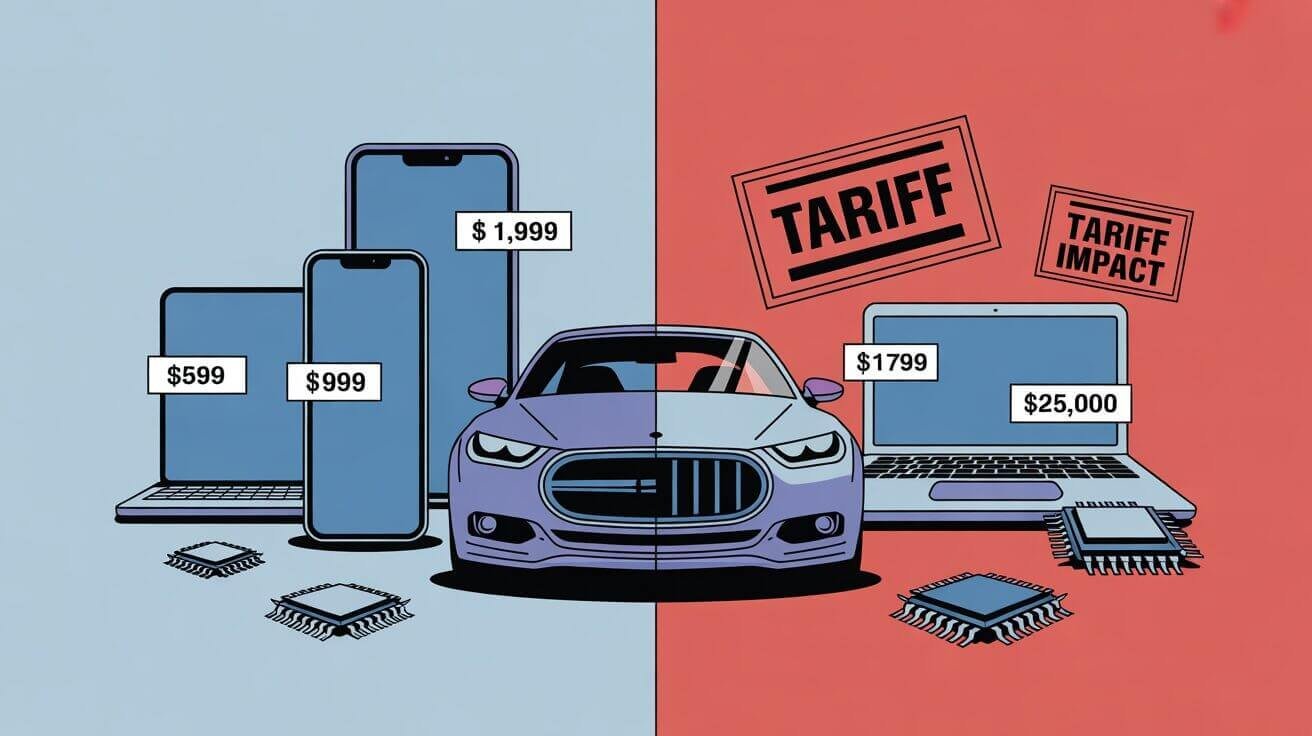When President Trump announced his plan to impose a 100% tariff on computer chips this week, he probably didn’t mention that your next iPhone could cost nearly $2,000. Unfortunately, the semiconductor tariff consumer impact extends far beyond Washington’s trade negotiations—it’s about to reach directly into your daily life and spending decisions.
The semiconductor tariff consumer impact represents one of the most significant policy shifts affecting technology prices in decades. This isn’t just about chips in isolation; it’s about understanding how these tiny components influence everything from your morning coffee maker to your electric vehicle.
What’s Really Behind Trump’s Chip Tariff Strategy
Trump said companies that make computer chips in the U.S. would be spared the import tax, essentially creating a carrot-and-stick approach to manufacturing. However, this strategy reveals a fundamental misunderstanding of how global supply chains actually work.
The semiconductor industry operates on a scale that most people don’t realize. Demand for computer chips has been climbing worldwide, with sales increasing 19.6 per cent in the year-ended in June, according to industry data. Moreover, these aren’t simple products that can be quickly relocated—they require specialized facilities, years of setup time, and billions in investment.
Taiwan currently dominates advanced chip production, with companies like TSMC manufacturing processors for Apple, Nvidia, and AMD. The reality is that the vast majority of chip production happens overseas, particularly in U.S.-ally Taiwan. Moving this production to the United States isn’t just expensive—it’s practically impossible in the short term.
Therefore, the immediate semiconductor tariff consumer impact will be price increases rather than domestic production growth.
## Electronics Price Shock: What to Expect
Your Smartphone Bill Is About to Get Painful
Let’s talk numbers that actually matter to your budget. Industry analysts project that the base model of a $1,199 iPhone 16 Pro Max assembled in mainland China could increase by $800, or 67%. That means your typical high-end smartphone could jump from around $1,200 to nearly $2,000.
But it gets worse. If Apple were forced to manufacture entirely in the United States, a Chinese-made device that previously sold for $1,000 would cost $3,500 if manufactured in New Jersey, Texas or some other state. This semiconductor tariff consumer impact makes premium smartphones a luxury item for many families.
Even budget-friendly options aren’t safe. Right now, the most affordable current-generation iPhone, the iPhone 16e, is priced starting at $599, but analysts suggest price increases of 30-43% are possible across the entire product line.
Beyond Phones: Your Entire Digital Life Gets Expensive
The semiconductor tariff consumer impact doesn’t stop with smartphones. Cars are becoming increasingly dependent on chips, with the value of semiconductors installed in cars expected to grow to as much as $4,000 by 2030, an 800 percent increase from 2020.
For vehicle owners, this translates to immediate concerns. A 22 percent increase in the cost of semiconductors could directly increase the cost of cars by up to $800. Electric vehicles face even steeper increases because they require significantly more chips than traditional cars.
Household appliances aren’t exempt either. Smart refrigerators, washing machines, and even coffee makers contain multiple semiconductors. The semiconductor tariff consumer impact means replacing any smart appliance could cost 20-30% more within months.
The Supply Chain Reality Check
Why “Made in America” Isn’t a Quick Fix
Trump’s strategy assumes that threatening high tariffs will force companies to relocate production quickly. However, the semiconductor industry operates differently than traditional manufacturing. Front-end semiconductor manufacturing takes a steady supply of more than 100 chemicals and materials, and the United States imports the majority of the materials required for manufacturing.
Building a competitive semiconductor facility takes 3-5 years and costs $10-20 billion minimum. TSMC’s Arizona facility, which represents one of the largest investments in U.S. chip manufacturing, won’t reach full production until 2026 at the earliest.
Meanwhile, the semiconductor tariff consumer impact begins immediately when existing inventory runs out. Apple has about three weeks of inventory in the US that it can “maximize,” while Canalys believes there is likely enough iPhone inventory for the next two to three months.
The Global Interconnection Problem
Modern chip production involves multiple countries for different stages. From raw wafer to packaged chip, production can touch five or more countries. Even if final assembly happens in the United States, the semiconductor tariff consumer impact still applies to imported components and materials.
This complexity means that companies can’t simply flip a switch and avoid tariffs. The interconnected nature of global supply chains ensures that the semiconductor tariff consumer impact will be felt regardless of where final assembly occurs.
Industry Response: Damage Control Mode
How Companies Plan to Handle the Crisis
Tech companies are scrambling to minimize the semiconductor tariff consumer impact through various strategies. Apple is already sourcing approximately half of the iPhones sold in the United States from India, but this doesn’t eliminate tariff exposure entirely.
Some companies may try to absorb costs initially. $900 million is less than one percent of Apple’s quarterly revenue and under two percent of Apple’s iPhone sales, which is why Apple is able to absorb the current costs. However, this approach isn’t sustainable long-term with 100% tariffs.
Other manufacturers are exploring creative pricing strategies. Rather than raising headline prices dramatically, Apple may try to link those higher prices to new AI features or fresh hardware, or charge extra for additions like increased storage.
The Innovation Acceleration
Paradoxically, the semiconductor tariff consumer impact may accelerate certain technological developments. Companies are investing heavily in automation, alternative materials, and more efficient designs to reduce dependency on imported components.
However, these innovations take time to develop and implement. The immediate semiconductor tariff consumer impact will precede any benefits from technological advancement by several years.
Economic Ripple Effects: Beyond Your Wallet
GDP and Job Market Implications
The broader economic consequences of the semiconductor tariff consumer impact extend beyond individual purchase decisions. Economic modeling suggests that a 25 percent tariff on semiconductors would reduce ICT consumption by 25.4 percent, equating to a $11.8 billion decline in the consumption of ICT products.
This reduction in technology consumption could trigger job losses in retail, tech support, and related service industries. When people can’t afford new devices, they also reduce spending on apps, accessories, and digital services.
Regional Economic Impacts
Certain regions face particularly severe consequences. Data centers represent the backbone of the Northern Virginia economy, and imposing a 25 percent semiconductor tariff would significantly alter the region. Data center construction may slow or halt entirely due to increased costs.
The semiconductor tariff consumer impact thus becomes a regional economic issue, affecting employment and investment in tech-heavy areas.
What This Means for Your Financial Planning
Immediate Action Items
If you’re planning major tech purchases, consider timing them carefully. When and by how much are still up in the air. The timing largely depends on Apple’s US iPhone inventory, but most analysts expect price increases within 2-3 months.
For essential upgrades, purchasing sooner rather than later could save hundreds of dollars per device. However, avoid panic buying—the semiconductor tariff consumer impact will likely lead to some product delays and supply constraints that could make rushing counterproductive.
Long-term Budget Adjustments
Plan for technology purchases to consume a larger portion of your budget going forward. The semiconductor tariff consumer impact suggests that the era of steadily decreasing electronics prices has ended, at least temporarily.
Consider extending the lifespan of current devices through better maintenance and protective measures. When a smartphone upgrade could cost $800 more than expected, making your current phone last an extra year becomes financially significant.
The Road Ahead: Policy and Market Evolution
Potential Policy Changes
Trade policies often evolve rapidly, and the semiconductor tariff consumer impact may prompt modifications. The Trump administration on Monday announced a temporary trade agreement with China that will roll back tariff rates for 90 days, showing that flexibility exists within the policy framework.
However, businesses can’t operate on the assumption that tariffs will disappear quickly. The semiconductor tariff consumer impact requires long-term adaptation strategies rather than waiting for policy reversals.
Innovation as the Ultimate Solution
While painful in the short term, the semiconductor tariff consumer impact may ultimately drive beneficial changes. Increased domestic production capacity, supply chain diversification, and technological innovation could create a more resilient technology ecosystem.
The question is whether consumers can weather the transition period, which could last 3-5 years before meaningful alternatives to current supply chains emerge.
Bottom Line: Preparing for the New Reality
The semiconductor tariff consumer impact represents more than a policy debate—it’s a fundamental shift in how much Americans will pay for technology. While the goal of domestic production has merit, the immediate consequence is that everyday electronics will consume a larger share of household budgets.
Smart consumers will plan purchases strategically, consider device longevity more carefully, and budget for higher technology costs. The semiconductor tariff consumer impact is coming whether we’re ready or not, but understanding the implications helps us prepare for this new economic reality.
The era of cheap, abundant electronics powered by global supply chains is facing its biggest challenge yet. How we adapt—both as individuals and as a society—will determine whether this policy achieves its intended goals or simply makes technology less accessible for American families.








